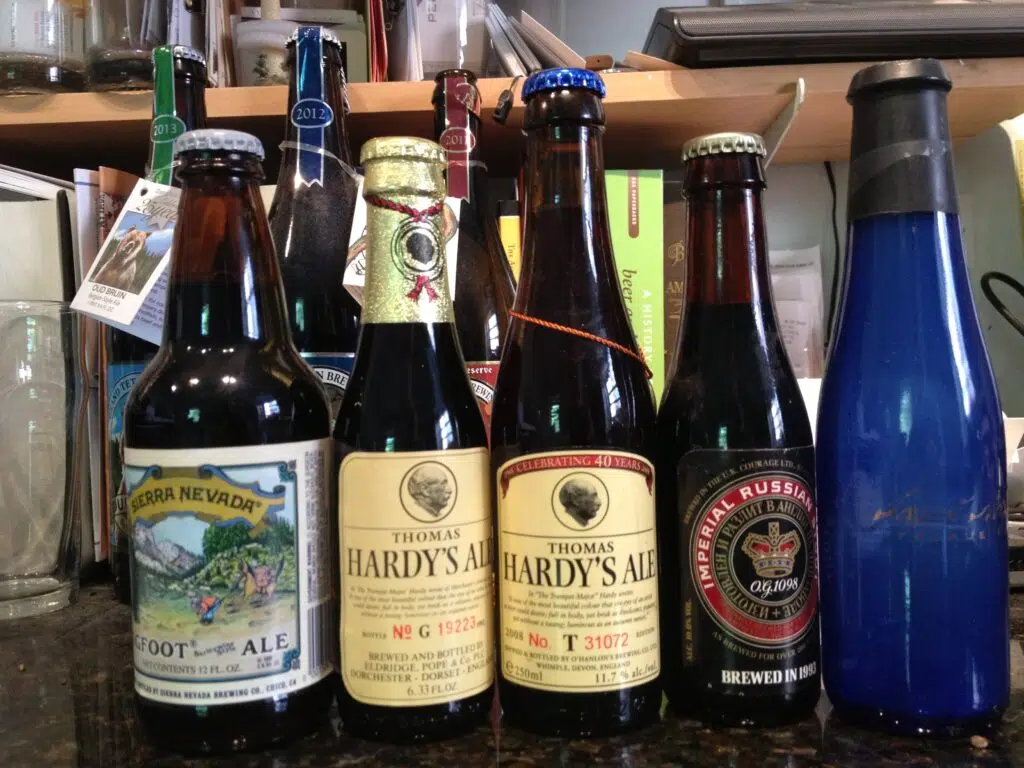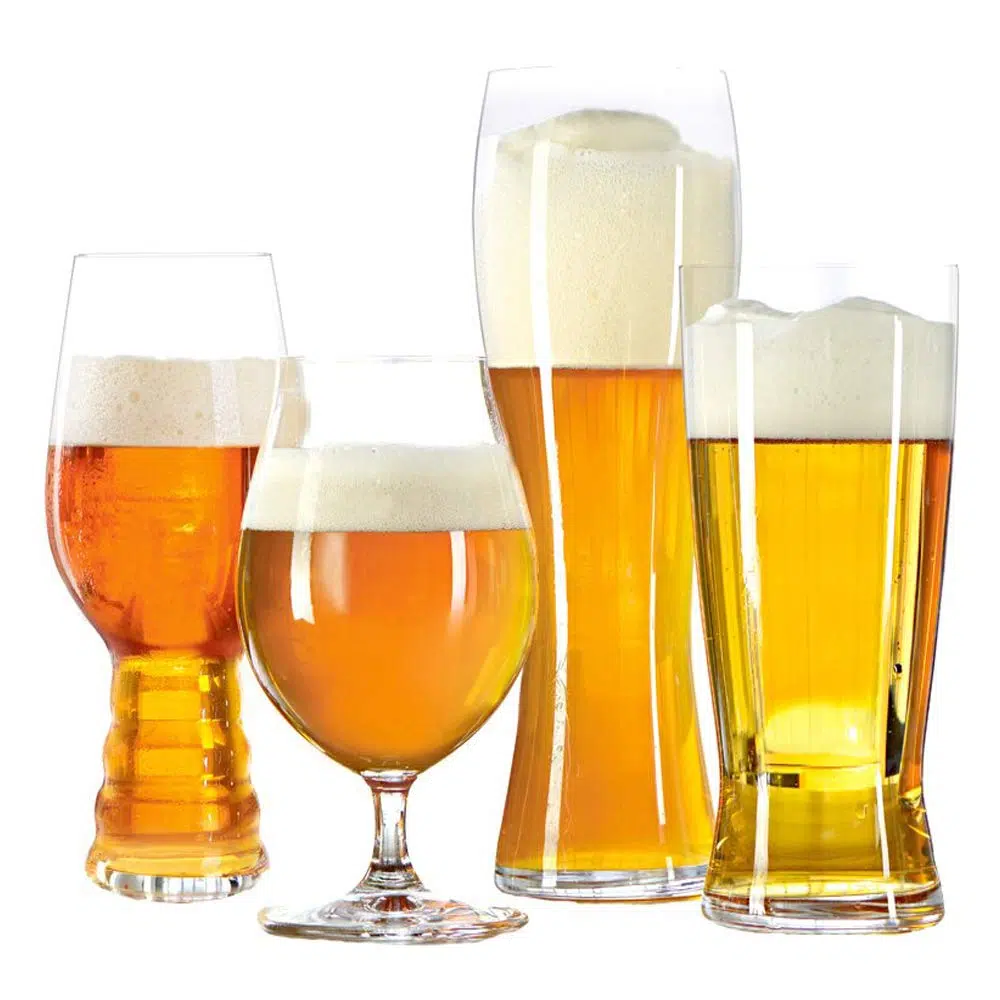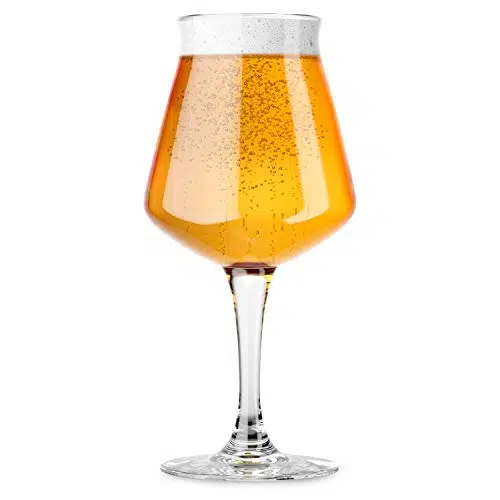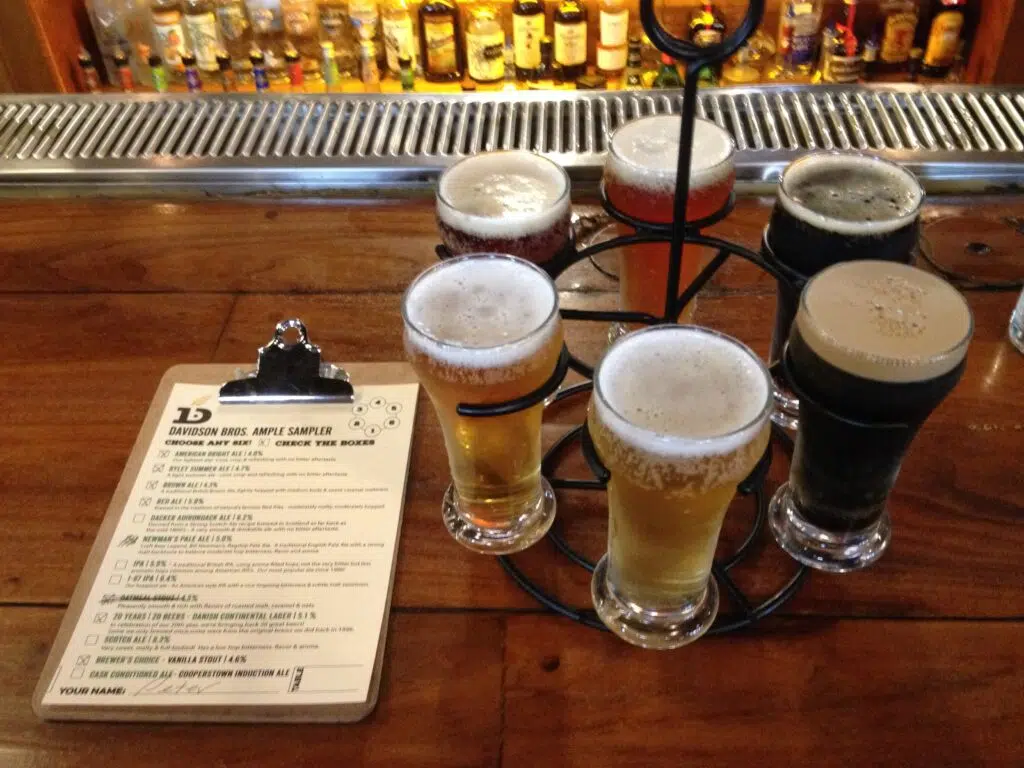Who are you going to invite?
Since this is your first “Beer Tasting,” let’s have some fun. Invite five or six friends who share your interest in beer, even if it is as something to blame for a bad morning.
Your first tasting events should be a fun exploration of different beers and ales that are relatively easy to get. It is good to start with three or four nationally distributed brews. But more about that later… Later Beer Tastings can get to be very academic.
How many beers are you going to taste?

After three or four beers, the taste receptors begin to show fatigue. Any more than that, and you will end up drinking beer rather than tasting it. This is not necessarily bad, but it goes better with the beer snacks at the end of the tasting.
Each 12-ounce bottle can provide enough for four to six sample pours of 2 to 3 ounces each.
At the end of a four-beer tasting, each taster should have had no more than 12 ounces of beer.
After that, of course, the beer treats can be sampled to see which beer complements each particular snack.
Glassware Makes a Big Difference
Those who make a serious study of fermented malt beverages (Beer Geeks/Nerds) often have a selection of beer glasses. Each glass is designed to show off a particular brew style to its best advantage.

The rest of us can do very well with a multi-purpose glass. I find the style of glass pictured below to be ideal. It is wide enough to allow for maximum surface exposure. This allows the aromatics from the hops and the esters (aromas) from fermentation. It is deep enough to allow for at least three inches of heading foam. This is important in allowing the first aromatics to be enjoyed before the flavors from the beer are experienced. The width also allows for proper appreciation of the color of the brew.

Choose Your Beers Thoughtfully
First Sample Offerings from a Local Brewery
According to the Brewers Association, most Americans live within five minutes of a Craft Brewery or Brewpub. This makes it easy to drop by and pick up a can, or two, of each of the beverages they offer. This allows you to become familiar with the different “Styles” of Beer and ale. (I again direct you to contact the Brewers Association for a list of over 200 styles.) It also gets you acquainted with the phenomena of the “House Yeast.”
These aromas result from the digestion of the sugar in the wort into Carbon Dioxide, Ethel Alcohol, and additional aromatics (farts). The faster the fermentation, the more intense those additional aromatics, typically the plumb, chocolate, and tobacco sensed when sipping a Russian Imperial Stout.
Taste Light to Dark
As with wine, maximize the tasting experience by starting with lighter, more delicate beers and working toward heavier brews.
Beginning with a light-flavored beer lets your palate appreciate how the flavor and intensity of hops and malt combine and contrast.

Use an Openminded Flexible Vocabulary
When any group with similar interests gets together, often there can be a sort of short-hand that all there understand and accept as part of the conversation. Any innocent bystander might not understand and even be offended until the jargon is translated.
When wine tasters say that a particular white wine smells like cat pee, that might not be a bad thing. Likewise, the image of a red wine’s aroma being like a wet horse blanket being a good thing is difficult for most of us to understand.
So feel free to free-associate and see how many flavors you can find. I often suggest that tasters try to remove the word “beer” from their minds and taste it as a sparkling beverage and nothing more.
Aroma/Flavor Suggestions:
Malty flavors: Oatmeal cookies, toffee, chocolate, cherries, pecans, prunes, and malt balls,
Hop flavors/aromas: Grapefruit, oranges, peppercorns, passion fruit, mango, and fresh herbs like thyme or sage, and pine needles
16 Beer Snacks from Britain, Canada, Germany, India, and the USA.
Wherever beer can be found, beer snacks will also be found—at least a package of beef jerky to go with a six-pack of inexpensive beer.
And then, the choice of a beer snack is unique to each of us.
Essentially, the hop tang and sweet-grain middle notes are paired with flavors familiar and comforting.
This opens a world of beer and snack pairings. It offers the chance to explore flavor combinations that make us rethink our “go-to” snacks.
I started out by asking friends to suggest a favorite beer snack.
Then I used trusty Google and selected the following snacks from Canada, England, Germany, and India. They range from refined to essential recipes.
.
Conclusion

Beer is more than a slightly-alcoholic, carbonated, malt-based beverage. Beer is more than “Yellow Fizzy Soda.”
That moment taken to reflect on that last sip of beer at least makes you notice the flavor. Processing this information usually excites our pleasure receptors. This is relaxing.
If anything, the last twenty-four months have proven to all of us that we are social creatures that need social contact to not develop serious mental problems. This noted, going a few rounds of beer with some friends and exploring the flavors of beer might even lead to discovering the foods those beers are served within their particular local.
I could go on about culture, history, and the economics of beer, but I think it is time for a Tasting. Don’t you?
WEB VIDEOS:
Finally, don’t just take my word for it. While doing the research for this blog I happened on the following take on beer tastings. If anything it will ad perspective to a great way of enjoying good friends and good beer and food. Salute!
How to Throw a Beer-Tasting Party

